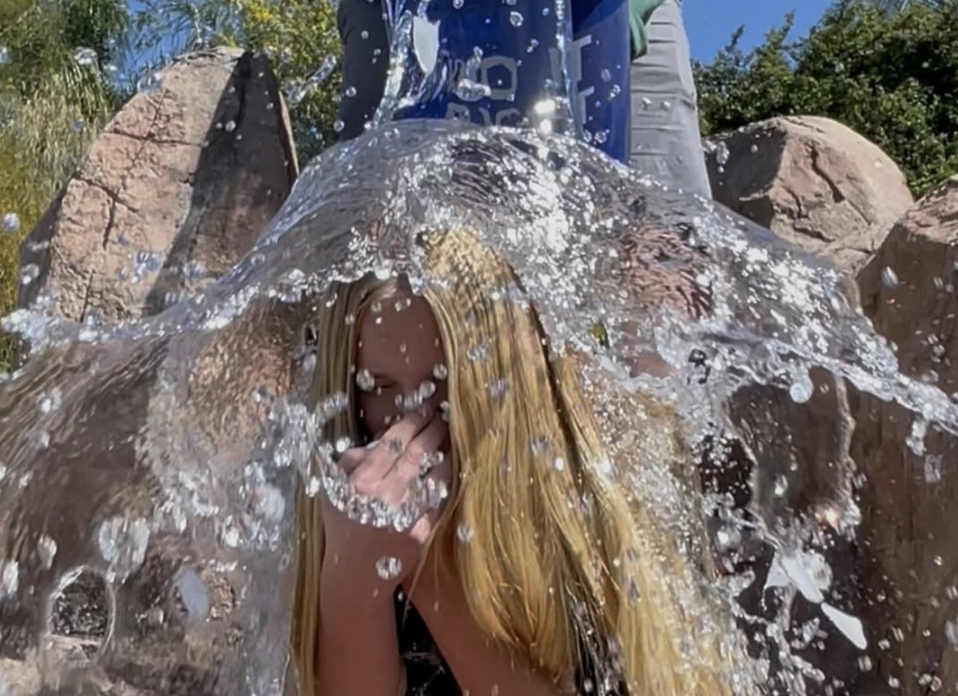
The Ice Bucket Challenge, first made popular in 2014, has made a comeback in 2025. Photo curtesy of @carseatdancers on Instagram.
Recently, young high school and college students have revamped the Ice Bucket Challenge. Taking over social media for nearly a week, the goal was to raise mental health awareness and money for Active Minds, a nonprofit organization.
The purpose of this challenge is for a good cause, yet it seems as though many don’t fully understand its purpose and take it for a frivolous, fun, summertime trend.
In 2014, the “Ice Bucket Challenge” was done to raise awareness for ALS, or amyotrophic lateral sclerosis, a neurological condition that has no cure. Three young men, Anthony Senerchia, Pete Frates, and Pat Quinn, who all lived with the disease, began the Ice Bucket Challenge with its purpose to raise money for the ALS Association. They were very successful, raising over $115 million for the cause. They also had over 17 million people donate and dump ice water on their heads.
The Ice Bucket Challenge can be for fun and done surrounded by a group of friends and family for a laughable moment. It comes off as an enjoyable moment, and should be. Water and ice, in a bucket, poured on you isn’t always the best moment to enjoy, which is why respect is due to those who participated. It’s not an easy task to do.
As well, mental health is something that should gain attention, especially now when we’re only a few years post-pandemic, when teenagers and young adults became consumed by social media that negatively impacted them drastically. But, this may not be the most efficient way to do so — at least not today. The Ice Bucket Challenge is often misunderstood and simply seen as a summer activity, and while it can be enjoyed as such, its main purpose is often forgotten.
Many people who partake in the challenge do not know of its true purpose, which is why this trend needs another redo. There’s many ways to go about this with the technology and social media advancements we have. Because the trend grew through social media platforms like Instagram, mainly the first time in 2014, and now on TikTok as well, we can use the stitch feature to include a “throwback” to 2014 when the purpose of the challenge was more focused and known.
Hashtags have been incorporated into these videos already, which supports the purpose, such as #SpeakYourMIND. This hashtag could be advanced to have people share their own mental health stories as part of the challenge, in order to implement “speak your mind” more literally.
Besides pouring ice water on each other, this fun and entertainment can become more purposeful when people share their experiences of struggles with mental health. This can also be done by stitching videos of people sharing their own stories, in addition to stitching old videos of the Ice Bucket Challenge in 2014.
This challenge has its ups and downs, but it’s being done for a meaningful purpose that almost everyone somehow can benefit from being that it’s now become more focused on mental health awareness. With some modifications, maybe we’ll get another renewal of the challenge in the next decade.